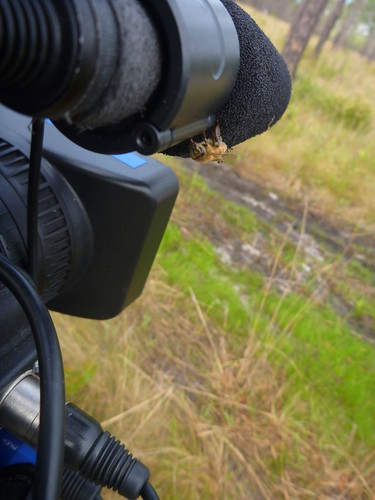After grabbing a cup of coffee at the T & P Deli in Hosford, we’re following Dr. Tom Miller into the Apalachicola National Forest. Tom is a botanist at Florida State University, and possibly the most knowledgeable person in our area regarding carnivorous plants. These wildflowers grow in ecotones between dry longleaf forest and wetland areas; places that are mostly moist, but that can also dry out and burn. Soils here are low in nutrients, and so plants adapted to receive nutrients from animals can thrive here. He knows a couple of spots deep in the forest where the balance is just right, and where we can see a good diversity of these killer plants.
Joining us is Eleanor Dietrich, an active member of the Florida Native Plant Society. Those particular conditions that carnivorous plants need deep in the forest, those are somewhat mimicked by ditches along the roads that cut through the forest. Eleanor thinks this can become an ecotourism destination.
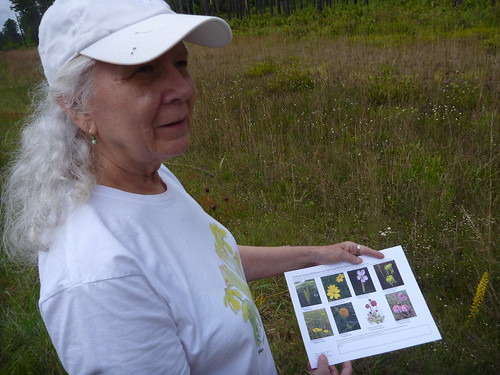
State Road 65 between Hosford and Sumatra is unofficially the Liberty County Wildflower Trail. For many, this is a scenic route to St. George Island. What Eleanor wants people to do is to pull over every once in a while to notice the incredible life peeking through the top of the grass growing on the shoulder. She has enlisted local businesses to help distribute free self-guided tour maps, and helped create a partnership between Tallahassee Artist Helen Dull and Pam Richter, owner of T&P Florist and Gift Shop in Hosford. Helen’s renditions of carnivorous flowers grace shirts, tote bags, and post cards at the T&P.
A Pitcher Plant Bog in the Forest
Our first location today is a spot by the New River, in the Apalachicola National Forest. We follow a couple of dirt roads off of S.R. 65, pulling off by neatly planted rows of pine. The rows speak to a former life as a timber plantation, like a lot of land within the National Forest. Immediately, though, Tom shows us a sign that this area is returning to its natural state.
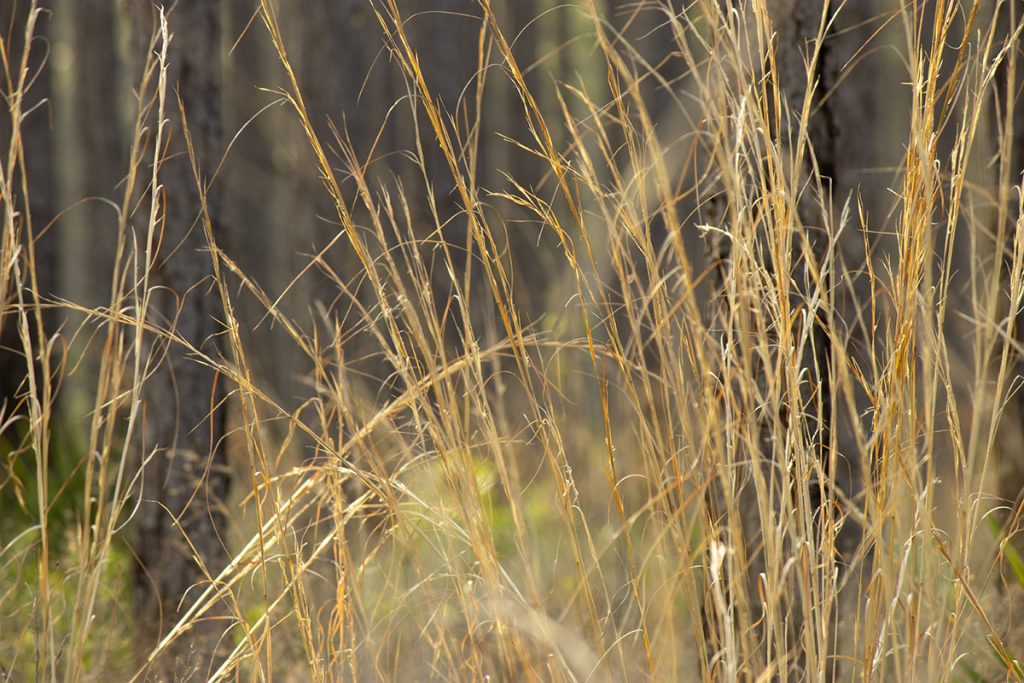
The wiregrass here is seeding, which means it has burned within the last year or so. This is beneficial to the plants here in the upland, as well as to those at the fringes. That’s where Tom is leading us now.
Tom leads us to a tangle of hardwoods at the edge of the forest.
The wet, mucky area around this tangle is full of wildflowers. The yellow trumpet pitcher plants had lost their flowers, but their remarkable pitcher leaves retained their strong presence in the woody tangle surrounding the New River.
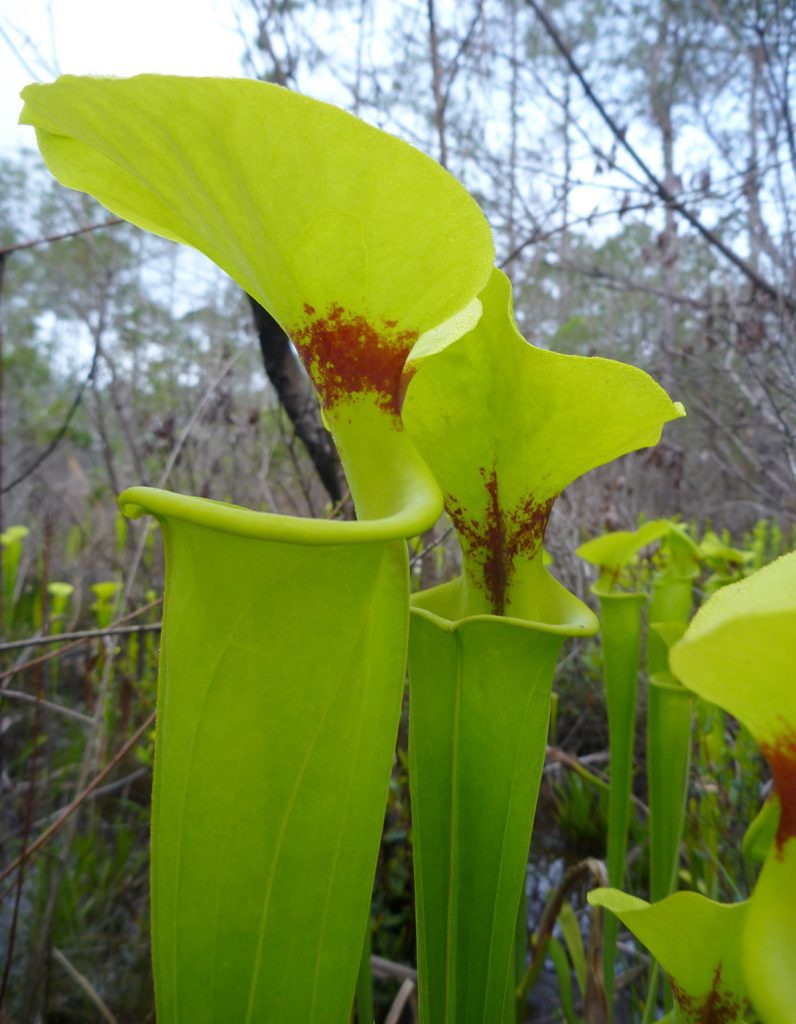
The rose pitcher plants here weren’t blooming, either; but we’ll see pitcher plant flowers later. Eleanor points out that while the different carnivorous plant species flower between, roughly, April and early May, not every species flowers at the same time. What we’re seeing today are the species that happen to be flowering in early May (of 2014). A couple of weeks ago, things will have looked a little different.
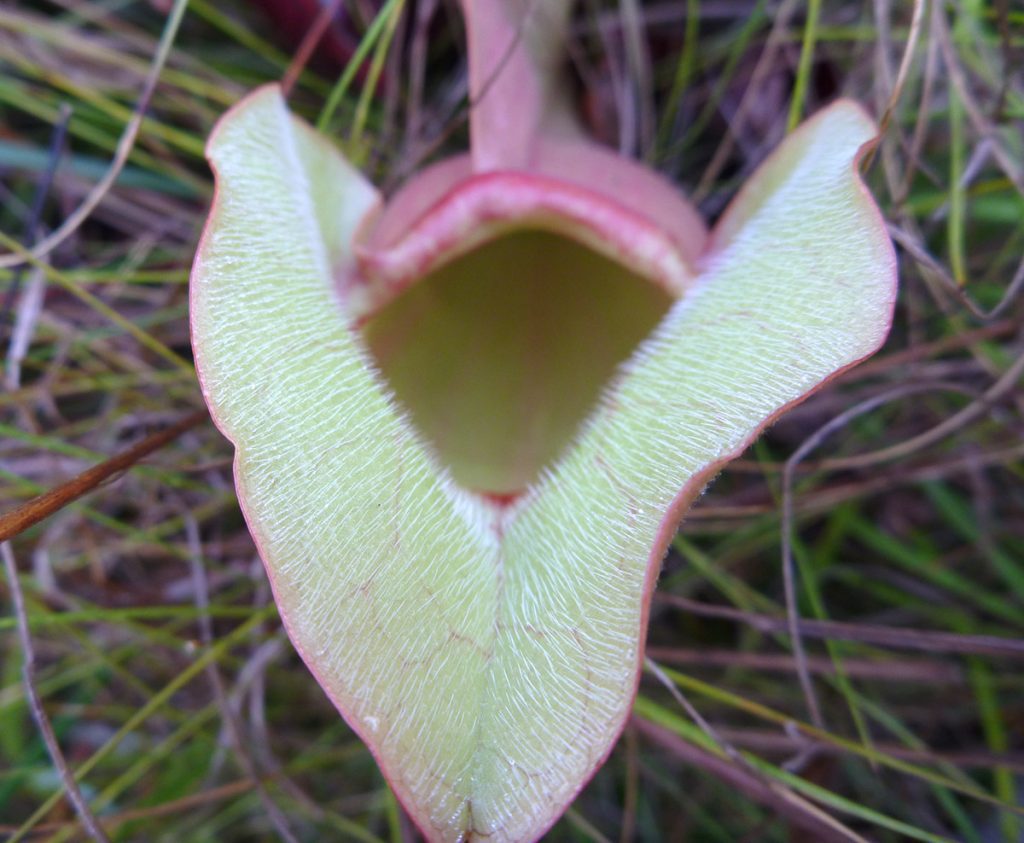
Anyhow, back to that rose pitcher plant. Tom points out the downward facing hairs in the pitcher; insects can walk in, but they’ll become trapped as they walk out. And this is how they end up providing nutrients to the plant:
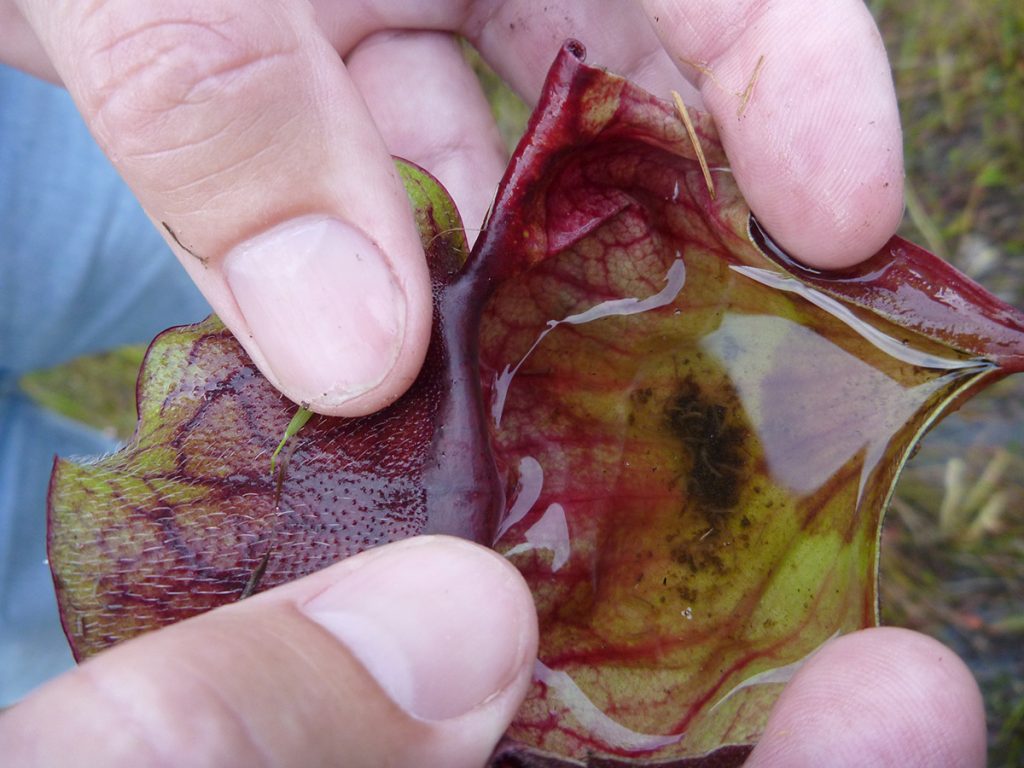
Wandering around, we also dewthreads, sundews, and butterworts.
Pitcher plants trap insects in their pitchers, where they decompose and feed the plant. Other carnivorous plants have sticky leaves:
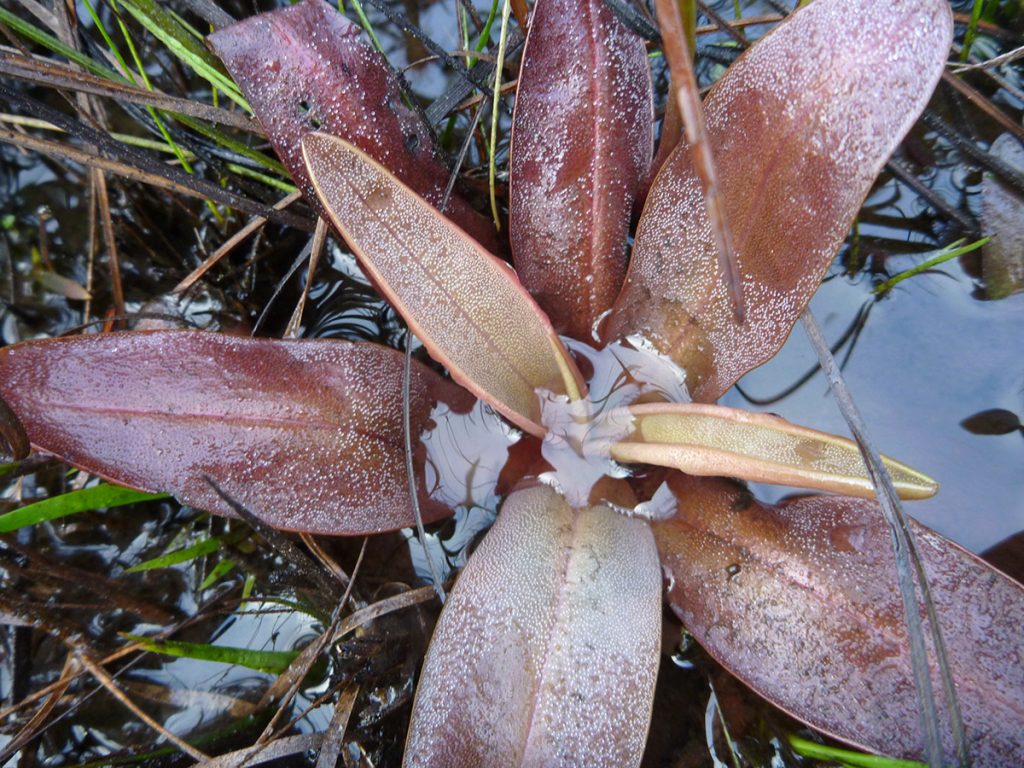
We do see one carnivorous plant here that’s flowering:
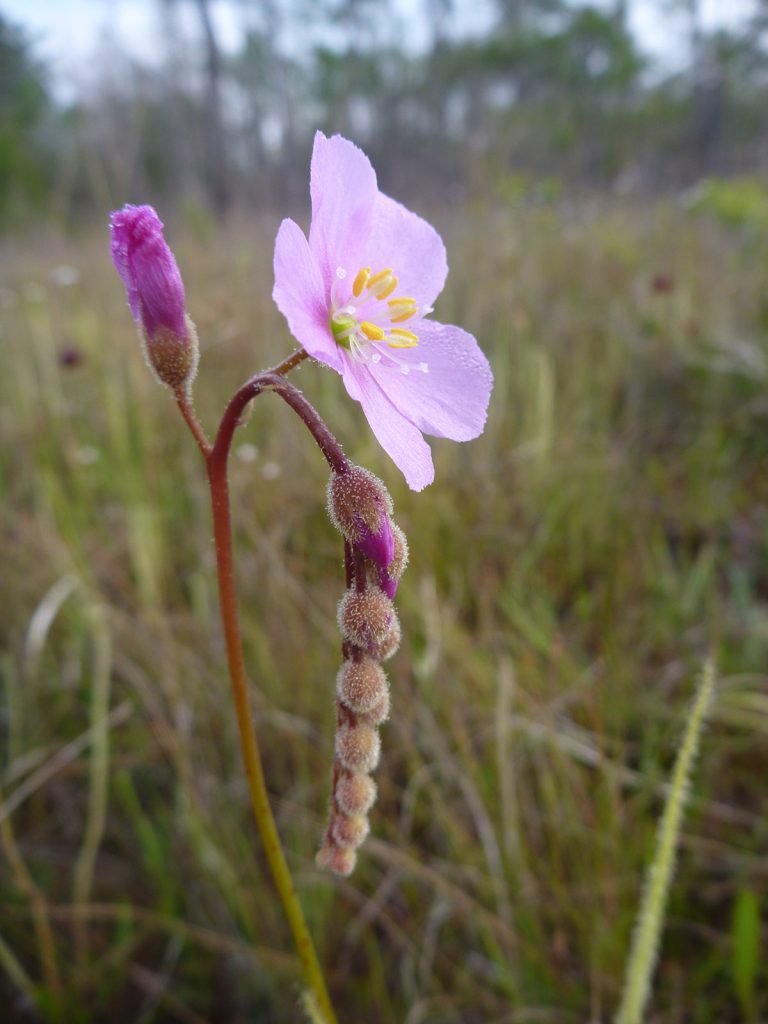
I neglected to get a shot of the thread-leaf sundew’s leaves, enamored as I was if its flower. The leaves are the sticky insect trapping part of the plant. This is how it eats. The flower is how it reproduces, and you’ll notice it’s nowhere near the leaves. It needs to keep its pollinators away from the leaves.
Into a Road Side Ditch in Search of Venus Flytraps
The most recognizable carnivorous plant, to a lot of people, is the Venus flytrap. This plant, however, is not native to our area. That doesn’t mean Tom doesn’t know where to find some in Liberty County.
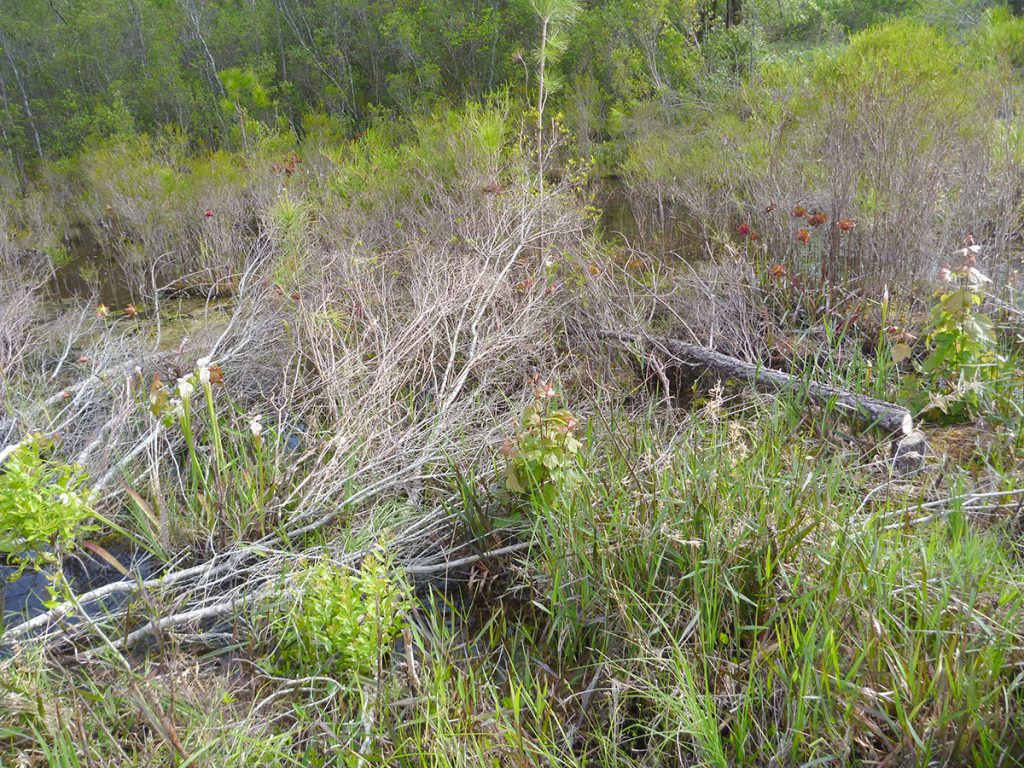
Tom says that the Biology Department at FSU has in its archives a letter from a man that possibly sheds light on how Venus flytraps made it here. Venus flytraps are native to the Carolinas; this man thought he would try to transplant to where carnivorous plants grow here locally, in an attempt to raise and sell them (illegally). Perhaps this man put them in this ditch?
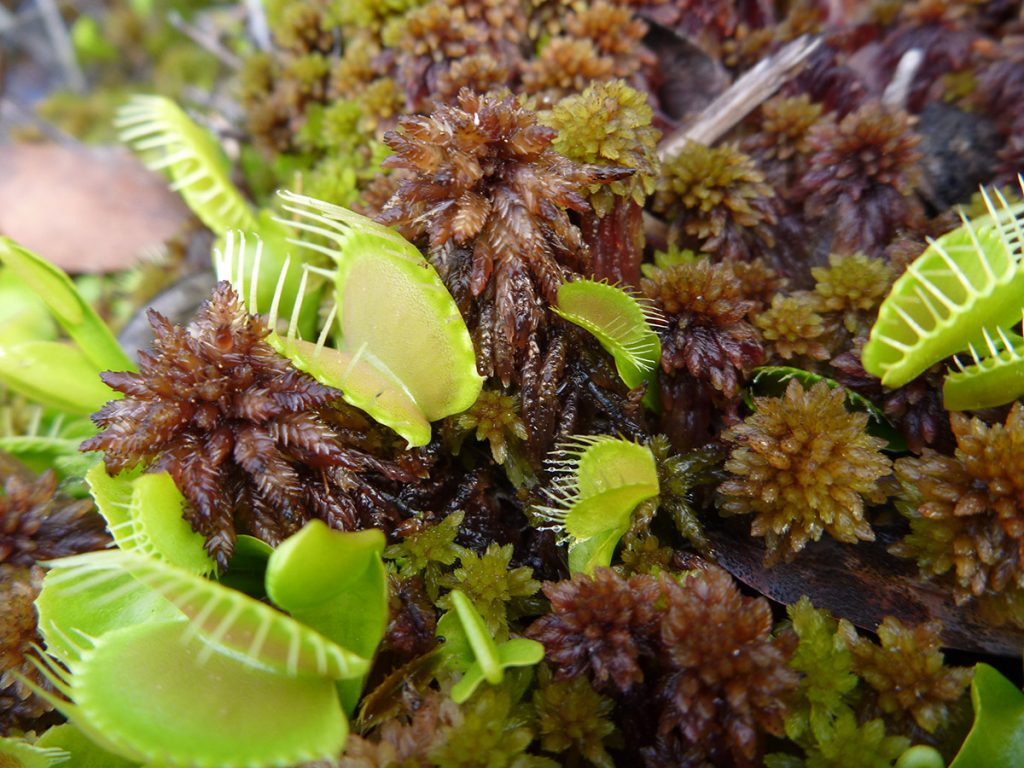
Here, we also see a third species of pitcher plant:
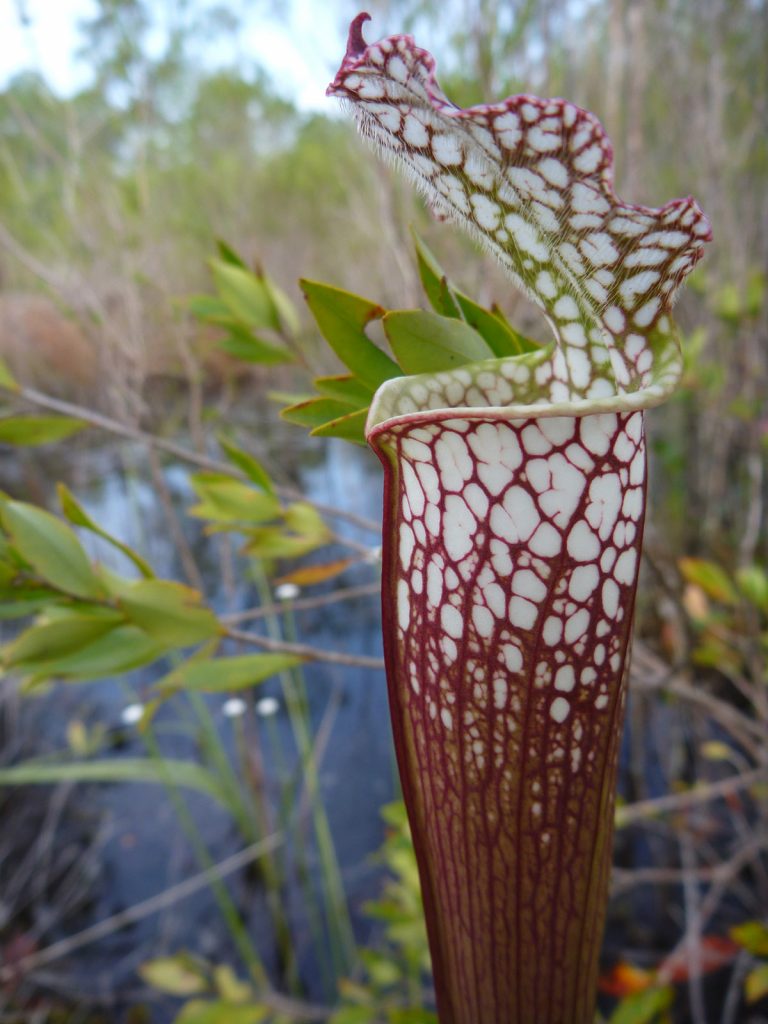
Along the Liberty County Wildflower Trail
The wide shoulders along State Road 65 often distract me when I drive that way. They’re only supposed to be mowed once a year, so wildflowers grow freely here. These flowers evolved with fire, which kills them back to their roots. So mowing them when they’re not flowering won’t kill them, though mowing every month or couple of weeks would be detrimental. And as in any fire dependent ecosystem, regular fire keeps woody plants from crowding out the lower lying wildflowers, grasses, and succulent plants.
These flowers are pretty resilient. They need wet conditions, but during the harsh droughts of the last fifteen years, Dr. Miller observed their numbers decline. “I was concerned about losing the population,” he said, “instead, they seem to be pretty resilient to drought.”
Among the tough wildflowers we find here are two different species of flowering pitcher plants:
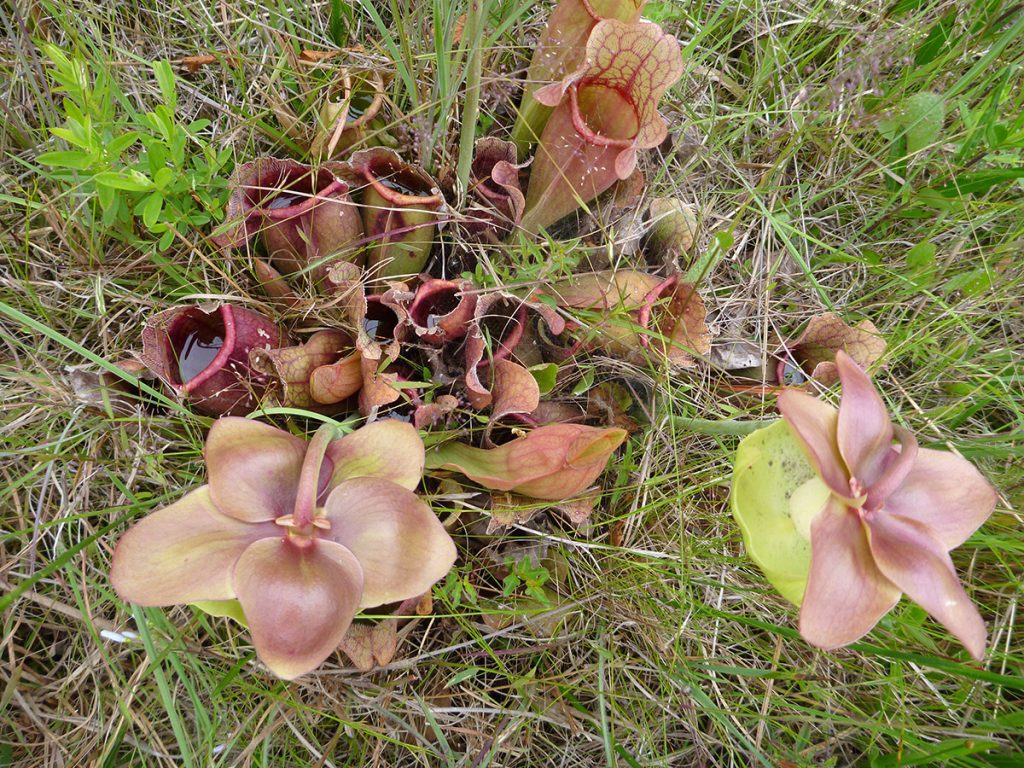
That’s a bird’s eye view. The rose pitcher plant flower is the banner image above. We also saw parrot pitcher plants:
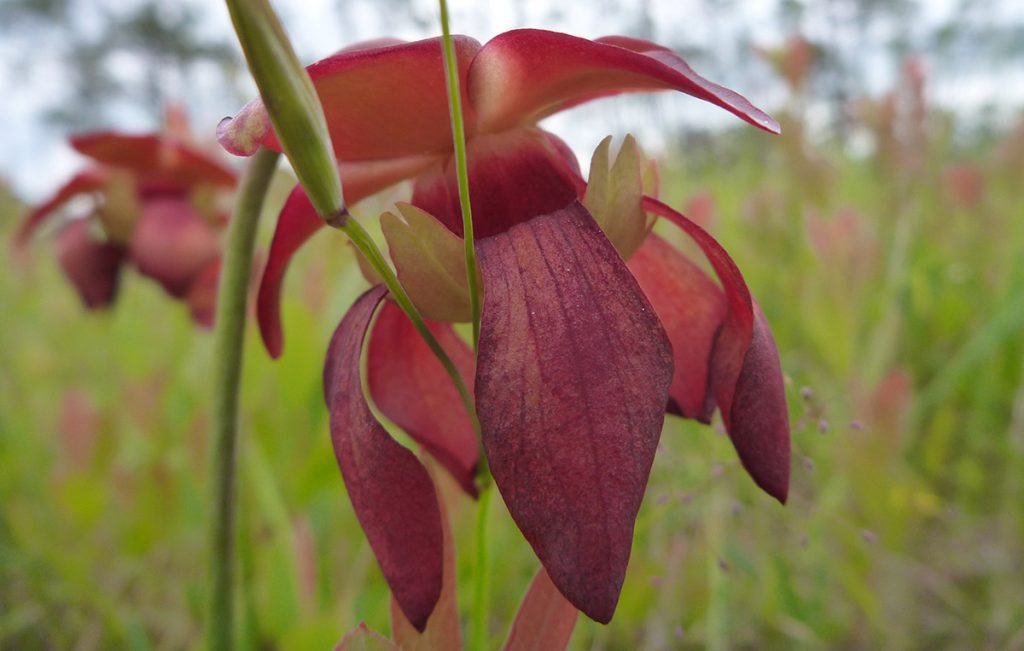
As you can see here, the flower is well above the pitcher leaves.
One thing that Dr. Miller studies, and I think this is pretty cool, are these food webs contained entirely within the leaves of pitcher plants. At the bottom of the food web are the decomposing bugs caught in the leaves. Bacteria break them down and they are eaten by single celled protozoa. Those are in turn eaten by mosquito larvae, which we of course find in any pool of standing water.
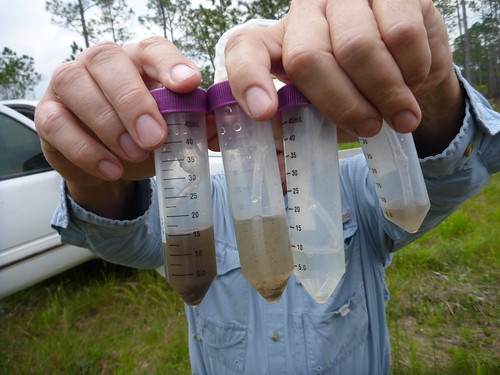
Nonlethal Plants on the S.R. 65 Shoulder
Carnivorous plants are a flashy draw, but there are other attractive wildflowers here:
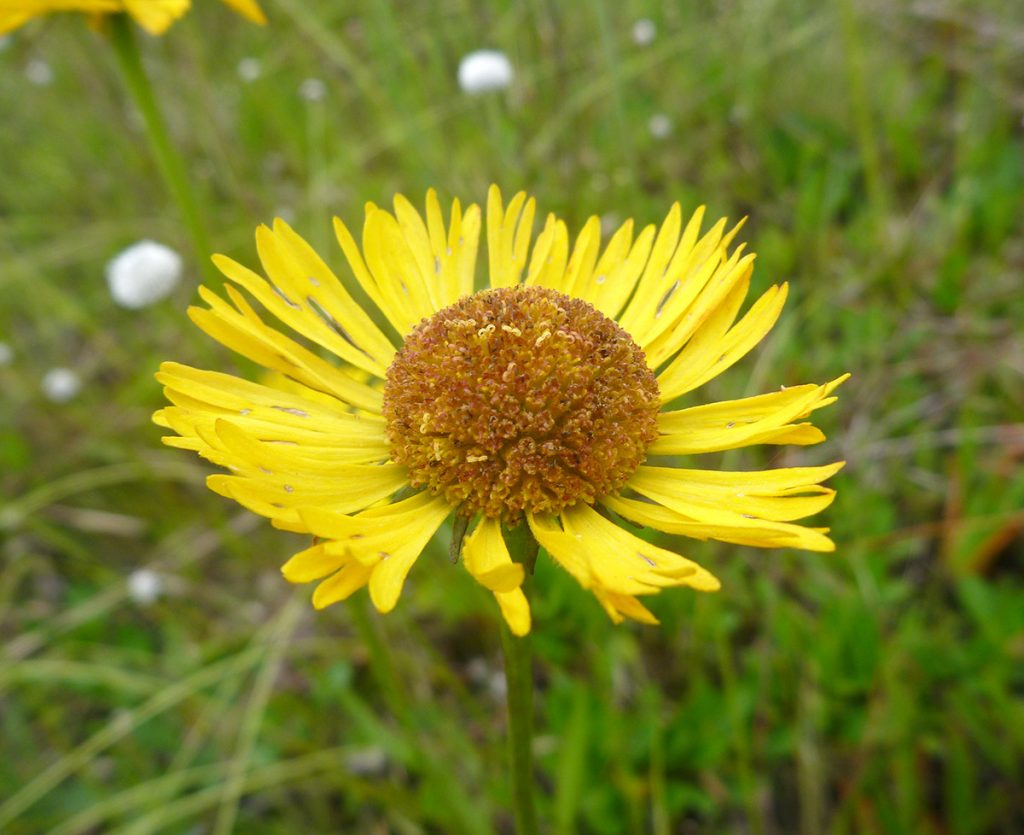
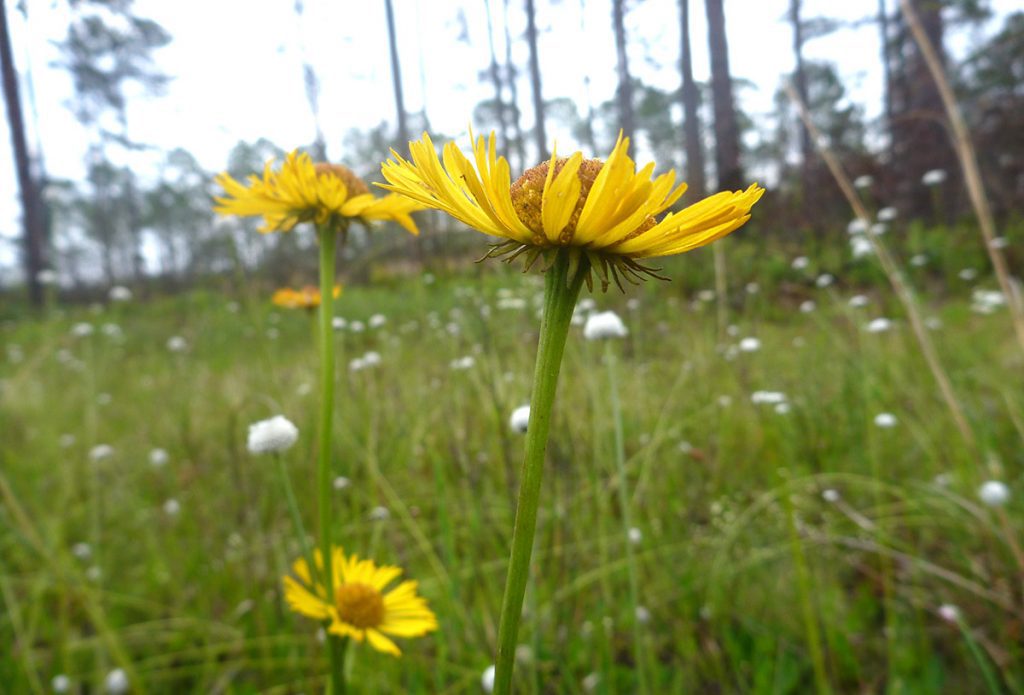
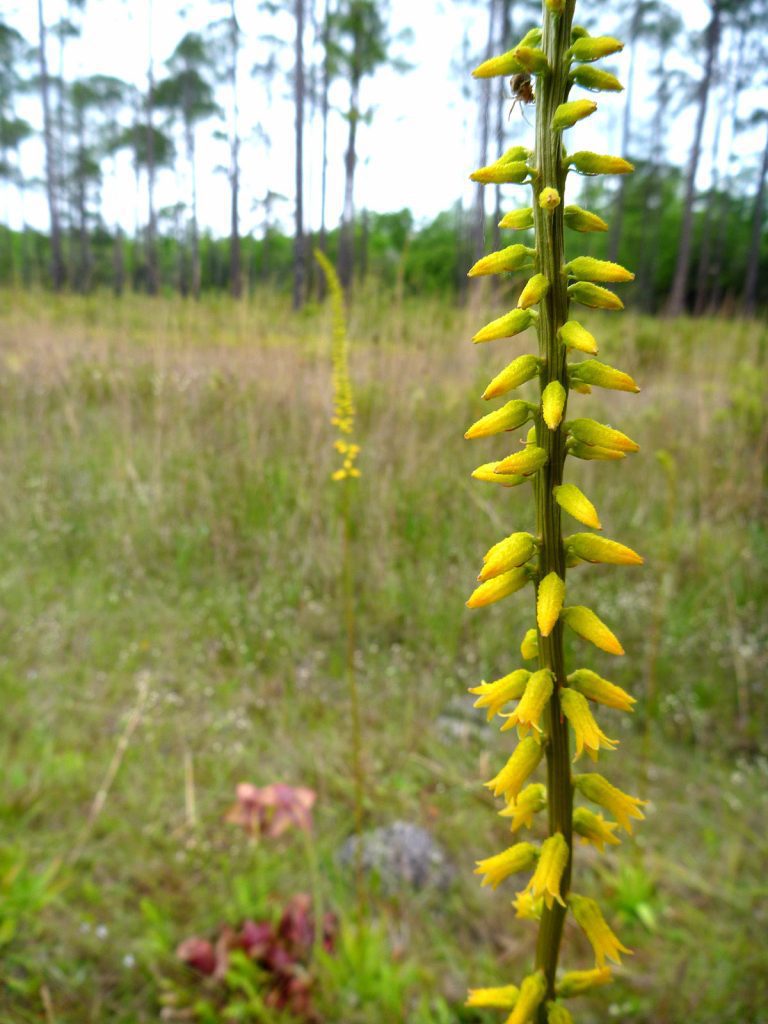
Colic root isn’t a carnivorous plant, but I did spy this predator in one of its flowers. Dangers abound for insects here:
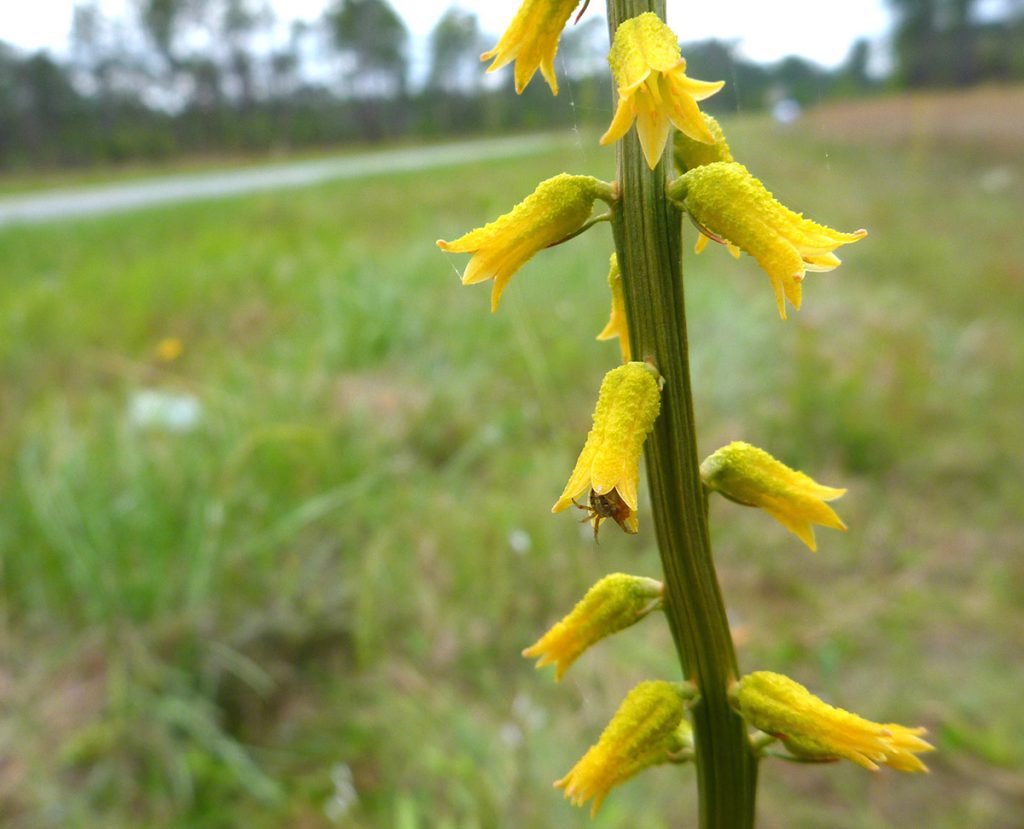
For more information on carnivorous plants in our area, Eleanor’s Flickr page is pretty helpful and fun to explore.
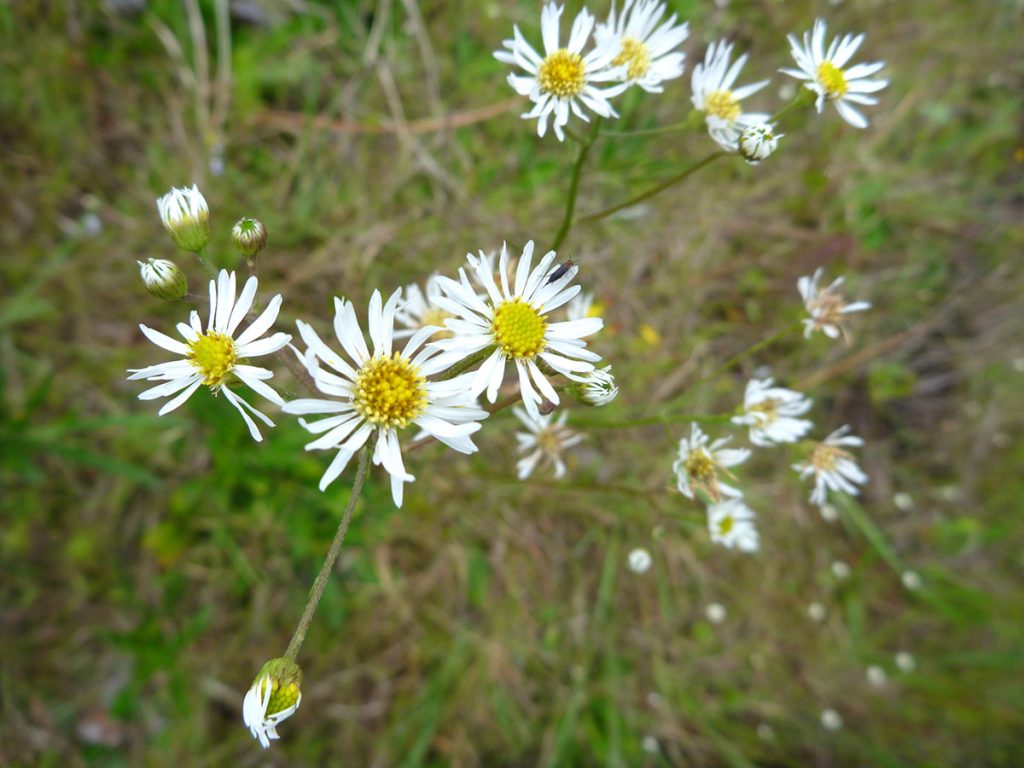
Where there are flowers, there are bees. Our next EcoAdventure will feature more flowers and many more bees. We’re heading to the Dead Lakes, where the tupelo are in bloom and honey is getting made.


